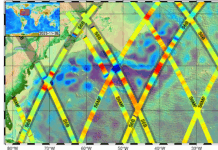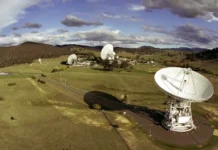Exploring the Past: NASA’s Reduced Gravity Walking Simulator
In the early days of space exploration, NASA faced numerous challenges in preparing astronauts for the unique conditions they would encounter on the Moon. One of the most significant hurdles was simulating the Moon’s gravity, which is only about one-sixth that of Earth’s. To overcome this, NASA developed a groundbreaking piece of technology known as the Reduced Gravity Walking Simulator. This innovative simulator played a crucial role in training astronauts for the Apollo missions, providing them with a realistic environment to practice walking, jumping, and running as they would on the lunar surface.
A Glimpse into the Past
The year was 1963, a time when the race to the Moon was in full swing. At NASA’s Langley Research Center in Hampton, Virginia, technicians were hard at work refining their methods to prepare astronauts for their historic missions. A pivotal aspect of this preparation was understanding and acclimating to the Moon’s lower gravitational pull. The Reduced Gravity Walking Simulator was a key component in this endeavor, allowing test subjects to experience conditions that closely mimicked those on the Moon.
Functionality of the Simulator
The simulator was ingeniously designed to reduce the effective weight on a person’s legs to one-sixth of their normal weight, mirroring the experience of walking on the Moon. This was achieved through a system of harnesses and pulleys that supported and distributed the user’s weight. By experiencing this reduced gravity, astronauts could learn how to perform necessary tasks in an environment that was vastly different from anything they had encountered on Earth.
Training for the Unknown
The Apollo missions required astronauts to conduct various activities on the Moon, from collecting samples to setting up experiments and even performing maintenance tasks. The Reduced Gravity Walking Simulator was instrumental in preparing astronauts for these tasks, helping them develop the skills and confidence needed to navigate the lunar terrain. The simulator provided a controlled setting where astronauts could practice and perfect their movements, ensuring they were well-prepared for the challenges ahead.
Realism Achieved
The effectiveness of the Reduced Gravity Walking Simulator was so profound that Neil Armstrong, the first man to set foot on the Moon, famously remarked that landing on the Moon was akin to training at Langley. This testament to the simulator’s realism underscores the importance of thorough preparation and the role of innovative technology in achieving the seemingly impossible. Armstrong’s words highlight the seamless transition from training on Earth to actual operations on the Moon, a testament to the dedication and foresight of NASA’s engineers and scientists.
The Legacy of the Simulator
While the Reduced Gravity Walking Simulator was developed for the Apollo missions, its legacy extends far beyond the lunar landings. The principles and technologies pioneered in this simulator laid the groundwork for future advancements in astronaut training and space exploration. The simulator not only advanced NASA’s understanding of lunar locomotion but also contributed to the broader field of biomechanics, influencing research in areas such as rehabilitation and physical therapy.
Technical Insights
For those interested in the technical aspects, the Reduced Gravity Walking Simulator was a marvel of engineering. It required precise calculations to ensure that the simulated gravitational forces accurately reflected those on the Moon. Engineers had to account for variables such as the user’s weight, the tension in the harnesses, and the friction of the walking surface. This meticulous attention to detail was essential in creating an authentic experience that would adequately prepare astronauts for their missions.
Additional Insights and Reactions
Reflecting on the significance of the Reduced Gravity Walking Simulator, it’s important to recognize the broader impact of such technological innovations. By addressing the challenges of lunar gravity, NASA not only advanced its space exploration objectives but also demonstrated the power of simulation technology in solving complex problems. This approach has since been adopted in various fields, from aviation to automotive engineering, where realistic simulations are used to enhance performance and safety.
Public reaction to the Apollo missions, and the technology that supported them, was overwhelmingly positive. The success of these missions captured the imagination of the world and solidified NASA’s reputation as a leader in space exploration. The Reduced Gravity Walking Simulator was a critical component of this success, exemplifying the ingenuity and determination that defined the Apollo program.
Conclusion
The Reduced Gravity Walking Simulator at NASA’s Langley Research Center was a pivotal innovation in the quest to explore the Moon. By simulating the unique conditions of the lunar environment, it provided astronauts with the tools they needed to succeed in their missions. The simulator’s legacy lives on, influencing not only the field of space exploration but also various other disciplines. As we continue to push the boundaries of what is possible, the lessons learned from this technology serve as a reminder of the power of human ingenuity and the importance of preparation in achieving great feats.
For more Information, Refer to this article.


































